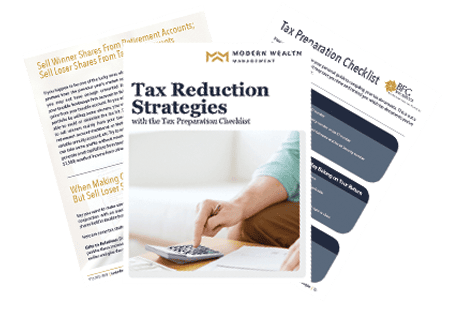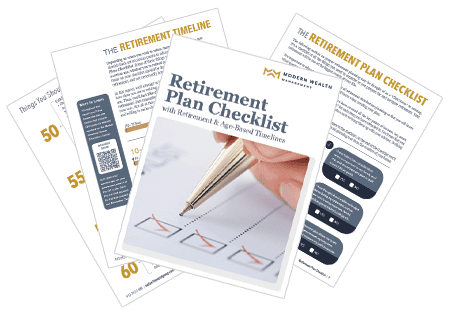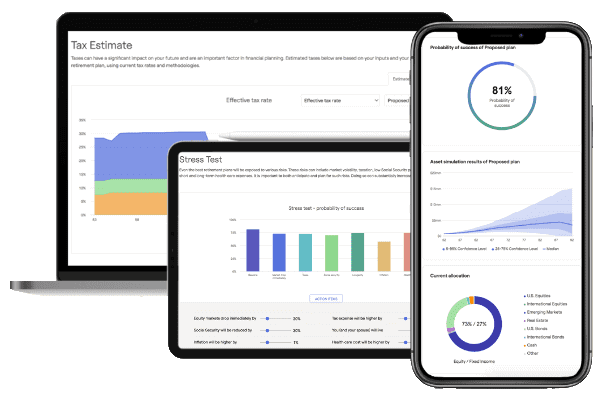Ed Slott Elite IRA Advisor Group℠ Gathers in Las Vegas for Fall Conference
Key Points – Ed Slott Elite IRA Advisor Group℠ Gathers in Las Vegas for Fall Conference
- The 50% RMD Penalty Waiver
- Inherited IRA Rules and the SECURE Act
- The Three Inherited IRA Beneficiary Designations
- The Ins and Outs About Qualified Charitable Distributions
- What Is Net Unrealized Appreciation?
- 9 Minutes to Read
Staying Up to Date on IRA Rules
Last spring, hundreds of financial advisors nationwide convened in Kansas City for Ed Slott’s Elite IRA Advisor Group℠ conference. In addition to that conference being so close to home for Dean Barber and Bud Kasper, Ed Slott was kind enough to make a live appearance on The Guided Retirement Show.
While Dean and Bud always enjoy talking with Ed and several other close friends at every Ed Slott Elite IRA Advisor Group℠ conference, the goal of each conference is to educate themselves about IRA rules and then pass that education along to our valued clients and others who are planning for retirement. The last Ed Slott Elite IRA Advisor Group℠ conference was held in October in Las Vegas. It was also the first Ed Slott Elite IRA Advisor Group℠ conference for three of our CFP® professionals—Will Doty, Logan DeGraeve, and Drew Jones. Here are a few of their main takeaways on what Ed and his team discussed on IRA rules.
The 50% RMD Penalty Waiver for 2021 and 2022 Missed RMDs
One of the primary topics that was discussed was IRS Notice 2022-53. This notice from the IRS has waived the 50% penalty for 2021 and 2022 missed Required Minimum Distributions on IRAs that fall within the 10-year payout rule. While Dean, Drew, Logan, and Will thoroughly reviewed the notice with Ed and the other advisors at the conference, Dean and our Director of Tax, Corey Hulstein, didn’t waste much time in researching how it could impact retirees after it was announced by the IRS on October 7. Dean also shared what he learned from Ed Slott about the waiver inherited IRA rules on America’s Wealth Management Show.
“Ed shared that he didn’t think that the IRS is going to require people to make up those missed RMDs for 2021 and 2022,” Dean said. “They’re just going to make the RMD start in 2023. The IRA will still need to be emptied at the end of the 10th year following the year of death.”
The SECURE Act Isn’t So Simple to Understand
What many people don’t understand is that everyone doesn’t need to take an annual RMD. You don’t need to take the annual RMD unless the person that you inherited the IRA from died after their required beginning date. The required beginning date is April 1 of the year after you turn 72. Needless to say, that’s one of many confusing components of the SECURE Act.
“It couldn’t get any more convoluted,” Dean said. “Will was telling me that he has a client who passed away and the beneficiary is less than 10 years younger than the IRA owner. So, they’re an eligible designated beneficiary, which means that they’re exempt from the 10-year rule. They can inherit the money and stretch it just like you could prior to the SECURE Act.”
Staying up to date with the latest SECURE Act regulations is no small task. Nevertheless, it’s important to do so. We’re thankful to have a resource like Ed Slott, who is America’s IRA expert, as we’re studying the impact these rules will have on people. Planning around RMDs is something that Corey and our CFP® Professionals will likely mention with clients during year-end tax planning meetings.
The Three Inherited IRA Beneficiary Designations
Let’s stay on the SECURE Act topic for a little bit longer, specifically when it comes to the 10-year payout rule. With inherited IRAs, there are three different beneficiary designations thanks to the SECURE Act. You can be a non-designated beneficiary, a non-eligible designated beneficiary, or an eligible designated beneficiary.
When Dean said it couldn’t get any more convoluted, he wasn’t kidding. But which beneficiary designation you fall under dictates the rules for how you get your money out when inheriting an IRA, so it’s pivotal to understand them. Let’s review who would fall under each beneficiary designation and why.
Non-Designated Beneficiary
First, let’s define what a non-designated beneficiary is. A non-designated beneficiary is a charity, estate, or non-qualifying trust. If you do decide to have a trust as the beneficiary of your IRA, it needs to be a qualifying trust. If it’s not, the IRA is going to become taxable in a flash. You really need to understand the language of the trust to stay in an eligible format.
We’re going to get more in depth with non-eligible designated beneficiaries and eligible designated beneficiaries shortly, but one or both need to be in the language of a trust. There can’t be any gray area with identifying them. Also, the trust can’t have language in it that gives a part of it to charity.
So, if you have a trust and are planning to have your children get 80% and the remaining 20% goes to charity, it becomes a non-qualifying trust. Why? Because part of the trust is going to a non-designated beneficiary with it going to a charity.
Non-Eligible Designated Beneficiaries and Eligible Designated Beneficiaries
Now, let’s define a non-eligible designated beneficiary and eligible designated beneficiaries. Non-eligible designated beneficiaries are designated beneficiaries who don’t qualify as an eligible designated beneficiary. OK. Simple enough, right? But what are eligible designated beneficiaries then?
Eligible designated beneficiaries consist of minor children under 21. However, they can’t be grandchildren. EDBs also include surviving spouses, chronically ill individuals, disabled individuals (under strict IRS rules), or people who are less than 10 years younger than the IRA owner.
So, the non-eligible designated beneficiaries are required to follow the 10-year rule. The totality of the funds needs to come out with the 10-year period one way or another. Reviewing the beneficiary designations was one of the most fascinating talking points for Will.
“I learned the most about the different types of beneficiaries and what their options are when they inherit a qualified account,” Will said.
One of Ed Slott’s Inherited IRA Case Studies
Now that we’ve defined each of the beneficiary designations, we’re going to review a case study that Ed shared with us. Ed Slott’s Elite IRA Advisor Group℠ goes over various case studies at each conference. They oftentimes review things like beneficiary situations in those case studies. Those case studies serve as a reminder that one small oversight can quickly lead to an inherited IRA mess. Here’s one of them that Ed shared.
Granddaughter Ava Inherits Two of Her Grandma Edna’s IRAs
The people involved in this case study are Grandma Edna, who died at 81 in 2021; her deceased brother, Jack; and her granddaughter, Ava. Ava is going to be the beneficiary of Edna’s two IRAs. We must figure out whether Ava is going to be a non-eligible designated beneficiary or an eligible designated beneficiary.
There is more background information that needs to be outlined before that can be determined, though. The first of Edna’s two IRAs was from Jack, who was two years younger than her. He passed away in 2011 at 69. Hopefully, this triggers your mind to something we discussed earlier. Jack’s age at the time of his death was before his required beginning date for RMDs. So, in 2012, Edna started taking stretch IRA distributions from the inherited IRA based on her age 72. When Edna died in 2021, Ava inherited that IRA.
Ava also inherited Edna’s own IRA. She inherited both IRAs in 2021 when she was 17. Now, let’s apply those beneficiary designations that we just reviewed to see what Ava’s RMD requirements will be. Especially at the young age of 17, this isn’t something that Ava can afford to mess up. Having to pay a 50% excise tax would be far from ideal.
Since Ava was 17 when she inherited the IRAs and is the grandchild of Edna, she’s a non-eligible designated beneficiary. Therefore, she’s subject to the 10-year payout rule and is required to empty Edna’s own IRA by December 31, 2031. Ava needs to take RMDs in Years 1 through 9 beginning in 2022—the year after Edna’s death—due to Edna passing away following her required beginning date.
Seeing How Inherited IRAs Can Have Different Rules
Now, let’s go back to the IRA that Edna had inherited from Jack that was then inherited by Ava. The same set of rules doesn’t apply. Ava is a successor beneficiary in this case instead of an eligible or non-eligible designated beneficiary. Ava would still be subject to the 10-year rule, but she needs to use Edna’s remaining RMD schedule starting in 2022.
Eighteen-year-olds shouldn’t be expected to understand those complicated inherited IRA rules from the IRS, but they are. Hopefully you can see that inherited IRAs and their rules aren’t just important for retirees to understand. It’s critical knowledge to have for people of all ages.
Qualified Charitable Distributions
Is this talk about inherited IRAs keeping you in the giving spirit after we just celebrated Thanksgiving? Well, in case you missed it during the week of Thanksgiving, tax planning was one of the things Dean said he was thankful for during the Thanksgiving-themed episode of The Guided Retirement Show. Dean spent a good portion of the podcast talking about Qualified Charitable Distributions, which were also a main talking point for Ed and his team at the conference.
“One interesting thing I learned was if a client missed taking their RMD that they can satisfy it by doing a QCD,” Will said. “The QCD doesn’t get rid of the 50% penalty, but could help in reducing ordinary income tax in that year since two distributions would be required.”
While the 50% penalty still isn’t ideal, we need to take tax breaks from the IRS when they give them to us. QCDs can be a great tax planning resource in general if you’re 70½ or older and are charitably inclined. A QCD allows you to transfer funds from an IRA directly to charity tax-free. And a tax-free retirement usually has most retirees smiling like Ed was during this virtual recording of The Guided Retirement Show.
We’re always looking for ways to help people pay as little tax as possible over their lifetime. To take a deep dive into what tax savings opportunities are available to you, check out our Tax Reduction Strategies Guide below.

Download: Tax Reduction Strategies Guide
Net Unrealized Appreciation
Along with doing some year-end tax planning right now, the end of the year is also a great time to look over our Retirement Plan Checklist. The Retirement Plan Checklist consists of 30 yes-or-no questions and an age-based timeline to gauge your retirement readiness. You can download your copy below.

Download: Retirement Plan Checklist
One of the benchmarks on the age-based timeline is when you’re one year away from retirement. At that time, net unrealized appreciation is something that really comes into play. NUA was another one of the focal points that the Ed Slott Elite IRA Advisor Group℠ discussed in Las Vegas.
So, what is net unrealized appreciation? If you have a 401(k) plan that holds stock in the company you work for, NUA is something you need to be aware of. Typically, you would do a rollover from a 401(k) to an IRA. At the time of the rollover, you sell the investments—moving the cash into your IRA to result in a tax-free transfer.
Special Tax Treatment
The caveat here is that employee stock can qualify for special tax treatment. It can be transferred to a tax-deferred account, meaning that you would be taxed on the cost basis of the underlying stock. Then, you can sell the stock and pay a favorable long-term capital gains rate on the difference between the value of the stock and your basis.
Of course, it depends on your unique situation to determine if/how that kind of transaction could be beneficial to you. That’s why it’s important to seek guidance from a tax professional prior to making a knee-jerk reaction type of decision. Corey and our tax team welcome the opportunity to answer your questions and encourage you to take a gander at our 401(k) Survival Guide to understand many other important things about how to manage your 401(k).
Download: 401(k) Survival Guide
Looking Forward to More Studying with Ed Slott on IRA Rules
There was a lot to absorb just with those main takeaways that Ed Slott and his team reviewed about IRA rules at the conference. However, Dean, Drew, Will, and Logan will all tell you that there was much more that was covered at the conference as well. We look forward to sharing more of what we’ve learned from Ed on IRAs in upcoming articles, podcasts, webinars, and radio shows.
Along with being America’s IRA expert, Ed can also attest that it’s crucial to have a comprehensive financial plan. IRA planning is no doubt a pivotal component of financial planning. We’re giving you the opportunity to see the impact that these financial planning strategies can have on you with granting access to our financial planning tool. It’s the same tool that our CFP® professionals use with our clients, and you can use it from the comfort of your own home at no cost or obligation. Just click the “Start Planning” button below to begin building your financial plan.

Have Any Questions?
As always, you’re more than welcome to reach out to us with any questions about what Ed reviewed. If we have the answer, we’ll let you know and give you a detailed response. If we don’t, we’ll reach out to Ed and his team to educate ourselves before passing along the education to you. So, ask away. You can schedule a 20-minute “ask anything” session or complimentary consultation with one of our CFP® professionals by clicking here.
We can meet with you in person, virtually, or by phone. Also, we can even screen share with you while using our financial planning tool so that you can follow along every step of the away at your own pace. We hope the education we’ve passed along from Ed has been helpful to you and look forward to sharing more with you in the near future.
Schedule a Complimentary Consultation
Click below to get started. We can meet in-person, by virtual meeting, or by phone. Then it’s just two simple steps to schedule a time for your Complimentary Consultation.
Investment advisory services offered through Modern Wealth Management, LLC, an SEC Registered Investment Adviser.
The views expressed represent the opinion of Modern Wealth Management an SEC Registered Investment Adviser. Information provided is for illustrative purposes only and does not constitute investment, tax, or legal advice. Modern Wealth Management does not accept any liability for the use of the information discussed. Consult with a qualified financial, legal, or tax professional prior to taking any action.